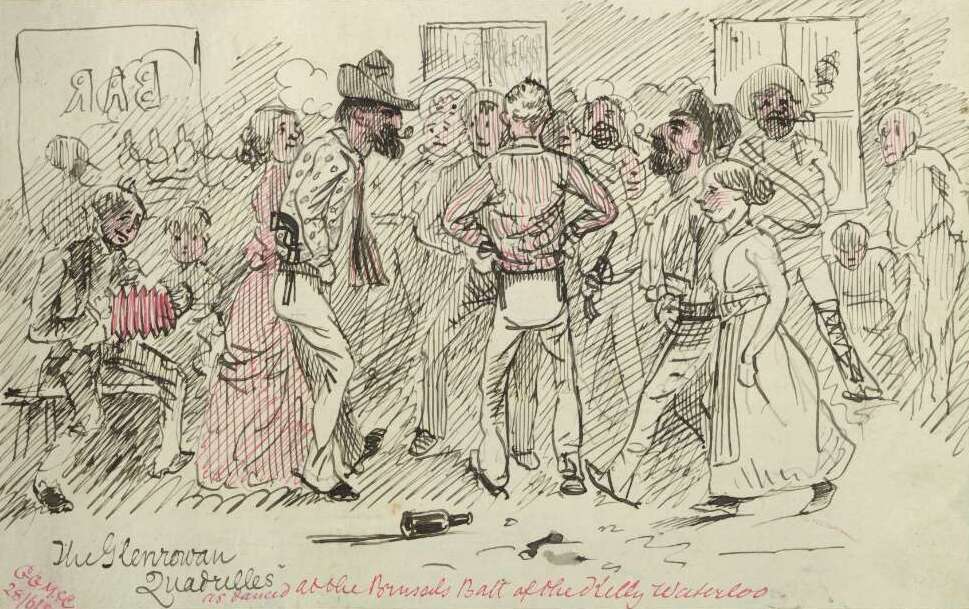Formally catalogued support for the existence of bush bands (with images)
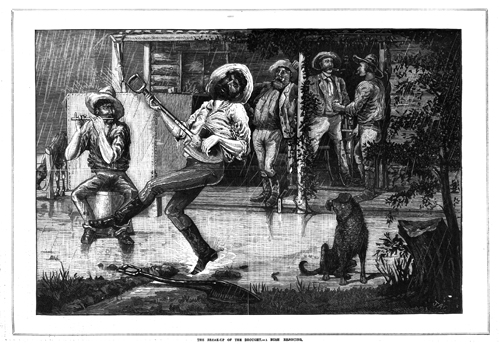 State Library of Victoria
State Library of VictoriaThe Break-up of the Drought - a Bush Rejoicing
Medium: Wood Engraving Publisher: Alfred Martin Ebsworth, Melbourne
January 24, 1889
State Library NSW reference mp010197
The use of a short handled shovel to serve as a banjo is a novel improvisation.
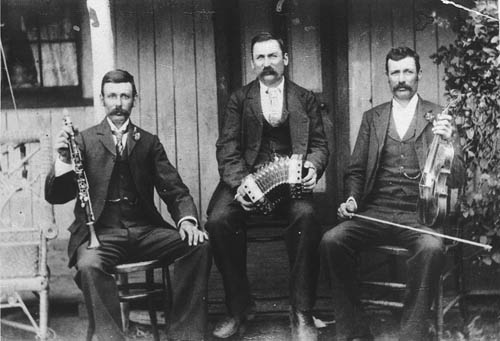 State Library of NSW
State Library of NSWColemane Band. Alfred, Albert and Charlie Colemane.
Cootamundra, NSW (306km WSW Sydney
"They played at all the bush dances and were self-taught."
circa 1890
Photograph: G Dinsmore
State Library NSW reference BCP 01486
See also The Concertina Journal
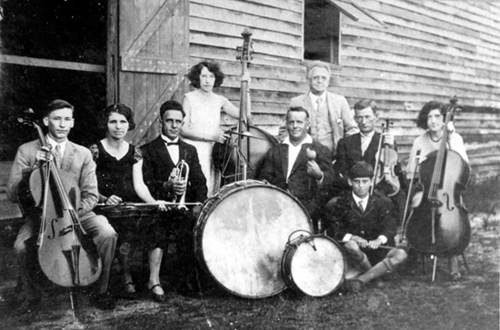
Sunshine Coast Council
Leach Brothers Band with female accompanists
Landsborough, QLD
circa 1900
Sunshine Coast Council reference M863458
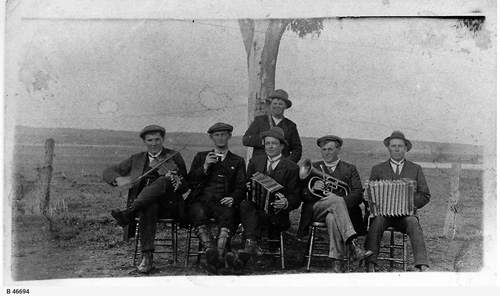
State Library of South Australia
The Bush Band at Point Pass
L-R sitting: Arthur Michalk; Garrie Michalk; Herb Obst;
Eddie Michalk; Arthur Handke
Standing: Adolph Koster
Point Pass is 120km north of Adelaide and 31km
south of Worlds End
circa 1910
State Library SA reference B-4669
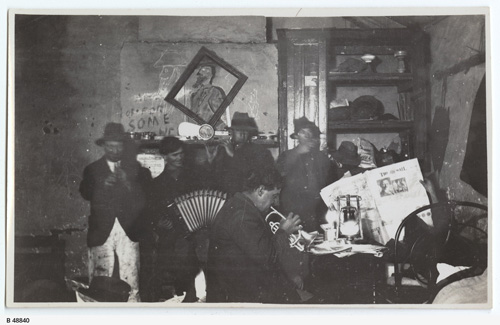
State Library of South Australia
A 'Bush Band' performing at O'Connells in Nackara. The conditions of the room are very poor with graffiti on the wall and a hurricane [lamp] providing light.
Nackara is on the Barrier Highway about halfway between Adelaide and Broken Hill
circa 1924
State Library SA reference B-48840
